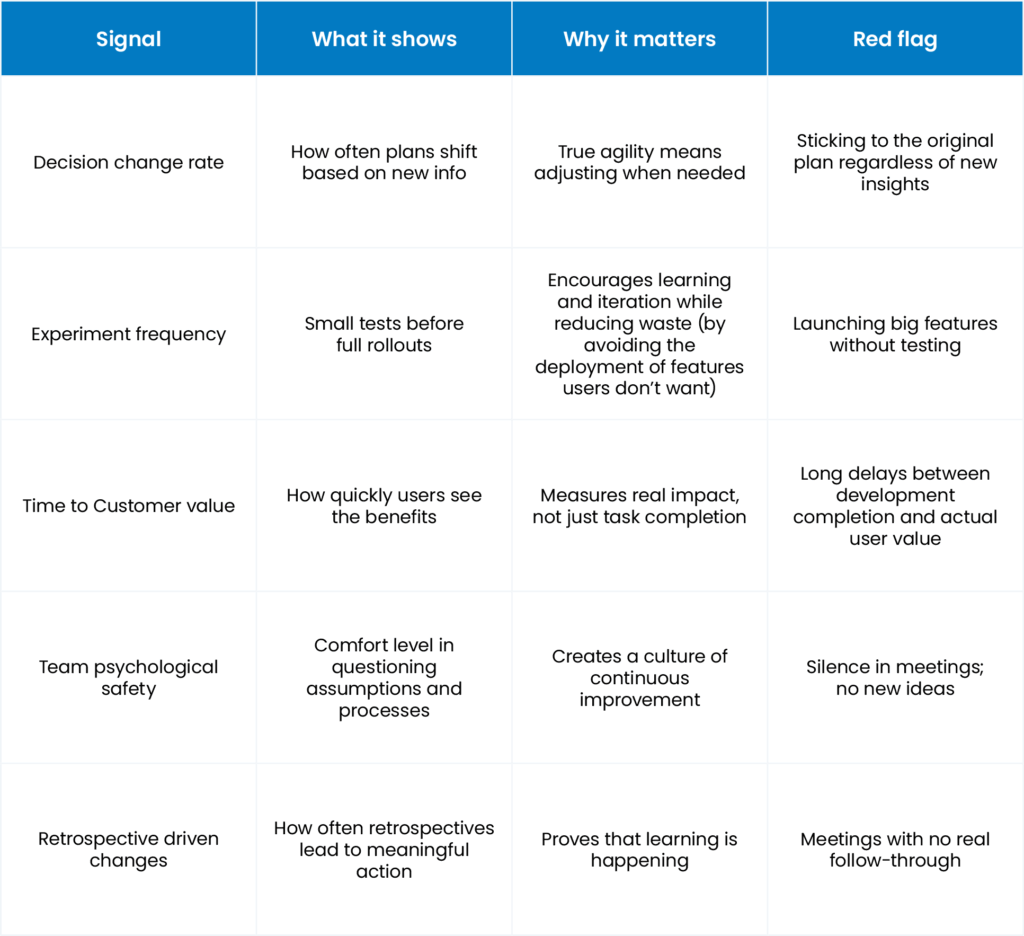 DE
DE- Industries
- Finance
Nearshore software development for finance—secure, scalable, and compliant solutions for banking, payments, and APIs.
- Retail
Retail software development services—e-commerce, POS, logistics, and AI-driven personalization from nearshore engineering teams.
- Manufacturing
Nearshore manufacturing software development—ERP systems, IoT platforms, and automation tools to optimize industrial operations.
- Finance
- What we do
- Services
- Software modernization services
- Cloud solutions
- AI – Artificial intelligence
- Idea validation & Product development services
- Digital solutions
- Integration for digital ecosystems
- A11y – Accessibility
- QA – Test development
- Technologies
- Front-end
- Back-end
- DevOps & CI/CD
- Cloud
- Mobile
- Collaboration models
- Collaboration models
Explore collaboration models customized to your specific needs: Complete nearshoring teams, Local heroes from partners with the nearshoring team, or Mixed tech teams with partners.
- Way of work
Through close collaboration with your business, we create customized solutions aligned with your specific requirements, resulting in sustainable outcomes.
- Collaboration models
- Services
- About Us
- Who we are
We are a full-service nearshoring provider for digital software products, uniquely positioned as a high-quality partner with native-speaking local experts, perfectly aligned with your business needs.
- Meet our team
ProductDock’s experienced team proficient in modern technologies and tools, boasts 15 years of successful projects, collaborating with prominent companies.
- Why nearshoring
Elevate your business efficiently with our premium full-service software development services that blend nearshore and local expertise to support you throughout your digital product journey.
- Who we are
- Our work
- Career
- Life at ProductDock
We’re all about fostering teamwork, creativity, and empowerment within our team of over 120 incredibly talented experts in modern technologies.
- Open positions
Do you enjoy working on exciting projects and feel rewarded when those efforts are successful? If so, we’d like you to join our team.
- Hiring guide
How we choose our crew members? We think of you as a member of our crew. We are happy to share our process with you!
- Rookie booth camp internship
Start your IT journey with Rookie boot camp, our paid internship program where students and graduates build skills, gain confidence, and get real-world experience.
- Life at ProductDock
- Newsroom
- News
Stay engaged with our most recent updates and releases, ensuring you are always up-to-date with the latest developments in the dynamic world of ProductDock.
- Events
Expand your expertise through networking with like-minded individuals and engaging in knowledge-sharing sessions at our upcoming events.
- News
- Blog
- Get in touch

07. May 2025 •3 minutes read
Is agile the right methodology for you?
Jovica Zorić
Chief Technology Officer
Imagine planning a road trip using the latest GPS and real-time traffic updates. You’ve set your destination and the GPS suggests the fastest route. But when you encounter unexpected construction or heavy traffic, you ignore the alerts and stubbornly stick to your original plan.
Sound familiar? This scenario perfectly illustrates how many organizations approach agility in software development – they have the tools but lack the mindset.
The illusion of agility
Many companies say they want to “go agile.” They introduce daily standups, organize work into sprints, and conduct retrospectives, expecting these ceremonies to automatically deliver faster results and higher productivity. But after a few months, frustration sets in—deadlines continue to slip, developers feel overwhelmed, and leadership starts questioning why agile “isn’t working.”
The truth is that agility isn’t about checking off a list of ceremonies—it requires a mindset shift. This transformation in thinking is precisely what many organizations claim to embrace but struggle to actually implement.
Let’s be real—many organizations are essentially looking for a “high-speed waterfall”—delivering everything they originally planned, just faster. They are committed to:
- A fixed, predetermined feature list
- Hard deadlines
- The same team structure and hierarchies
Then, they layer agile ceremonies on top, hoping it will magically improve the delivery process.
The real key to agility
Agility isn’t about speed—it’s about adaptability.
If you can’t shift priorities, adjust scope, or change direction when new information emerges, you’re not being agile—you’re just doing waterfall development with additional meetings.
For agility to work effectively, at least one of these must stay flexible:
- Scope: Being open to adjusting features based on user feedback and emerging market needs
- Timeline: Allowing reasonable flexibility in deadlines to accommodate meaningful and valuable improvements
- Resources: Being prepared to scale teams or provide additional support when needed
If all three are locked, you’re in waterfall territory — and that’s fine. Some projects can benefit from this approach, but expecting agile results without actual flexibility is a recipe for frustration.
I find this analogy particularly helpful in explaining the difference:
- Waterfall is like a canal—structured, controlled, and efficient for traveling along the predetermined path
- Agile is like a river—flowing, adapting, and sometimes finding better routes along the way
Organizations that merely “do agile” while keeping the rigid structures are essentially trying to turn a river into a canal while calling it agile. They want the predictability of waterfall with the speed promised by agile methodologies.
Measuring agility
We have sprints, we’re agile! Do you think that is true? How do you know if you’re actually agile? Look beyond velocity and burndown charts and consider these:

Agility is about developing adaptability that aligns with the needs of both the team and the product, especially in complex, unpredictable environments. In a setting where everything is stable and predictable, agility might not be necessary.
Stop “doing agile” — start “being agile”
Agility isn’t about rituals or tools—it’s about creating an environment where teams can handle change without chaos. Organizations need to stop forcing work into rigid plans and start trusting teams to find the best way forward.
Before kicking off another “agile transformation,” ask yourself: Do we actually want to be adaptable, or are we simply trying to move faster while maintaining rigid control?
The choice isn’t between agile and non-agile—it’s between being flexible and staying rigid. The most successful organizations understand that in today’s rapidly changing environment, adaptability isn’t just a methodology but also a competitive advantage.
Choose wisely, because true agility requires more than ceremonies — it demands courage, trust, and a fundamental shift in how we think about planning and execution.
What are your thoughts? How does your team approach agility?
Tags:Skip tags

Jovica Zorić
Chief Technology OfficerJovica is a techie with more than ten years of experience. His job has evolved throughout the years, leading to his present position as the CTO at ProductDock. He will help you to choose the right technology for your business ideas and focus on the outcomes.


